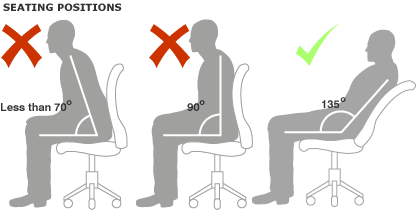

Growing up, we were told to “sit up straight” — not because it’s better for our health, but because it looks more productive. As it turns out, sitting up straight (i.e. 90-degree angle at the pelvis) is actually harmful in the long run.
We’ve known this for a while — since 2006, actually — but people keep perpetuating bad facts. Isn’t it time to put these myths to an end? Stop sitting up straight! The proper angle is somewhere between 120 and 135 degrees, which looks like this:

Other important sitting posture tips:
If you sit for long periods of time, it might be smarter to start using a standing desk instead. And if you’re on a laptop, you should heed these posture tips when using laptops.
Do you sit at a 135-degree angle? Know of any other posture tips that can help prevent pain and damage? Share your experiences with us in the comments!
Image Credit: Office Woman Back Pain by Lisa S. via Shutterstock




 Where to Download the Best Linux Games Without Any Hassle
Where to Download the Best Linux Games Without Any Hassle Metal Gear Online Infiltrator Class Tips
Metal Gear Online Infiltrator Class Tips Dragon Age Inquisition: Restructure Character Skills
Dragon Age Inquisition: Restructure Character Skills LEGO Jurassic World (3DS) first impressions
LEGO Jurassic World (3DS) first impressions List Of All Star Wars: Battlefront Easter Eggs
List Of All Star Wars: Battlefront Easter Eggs